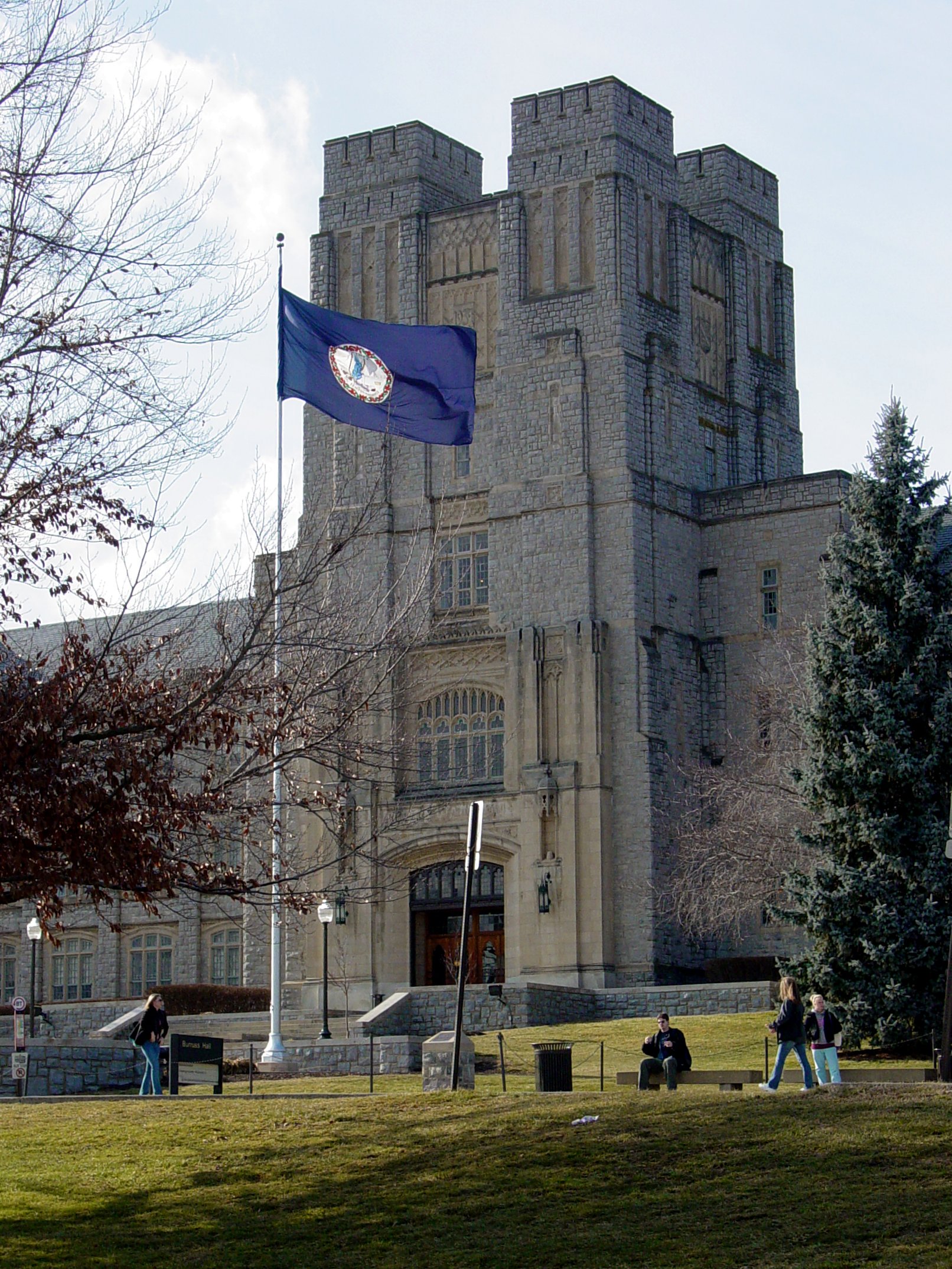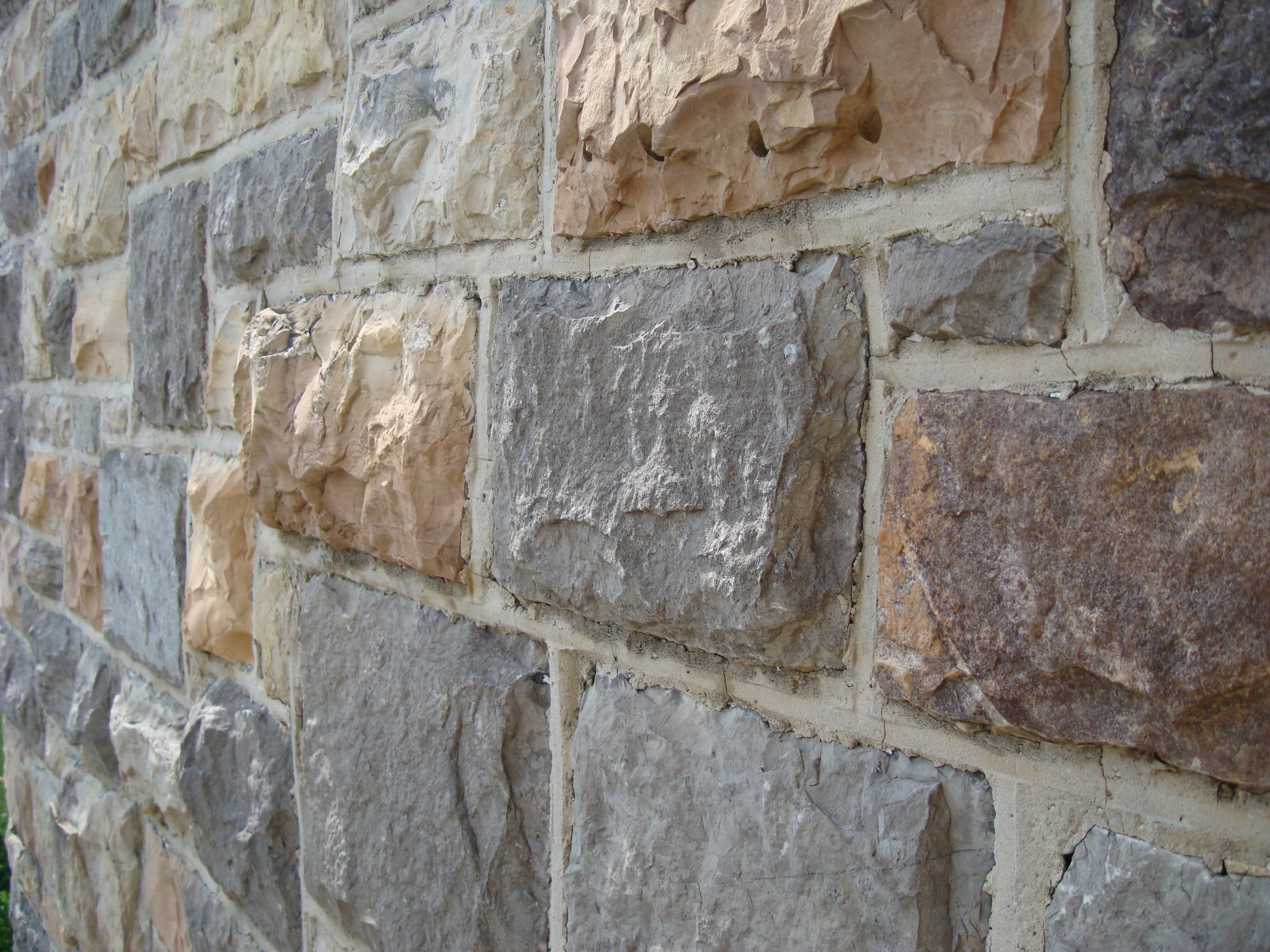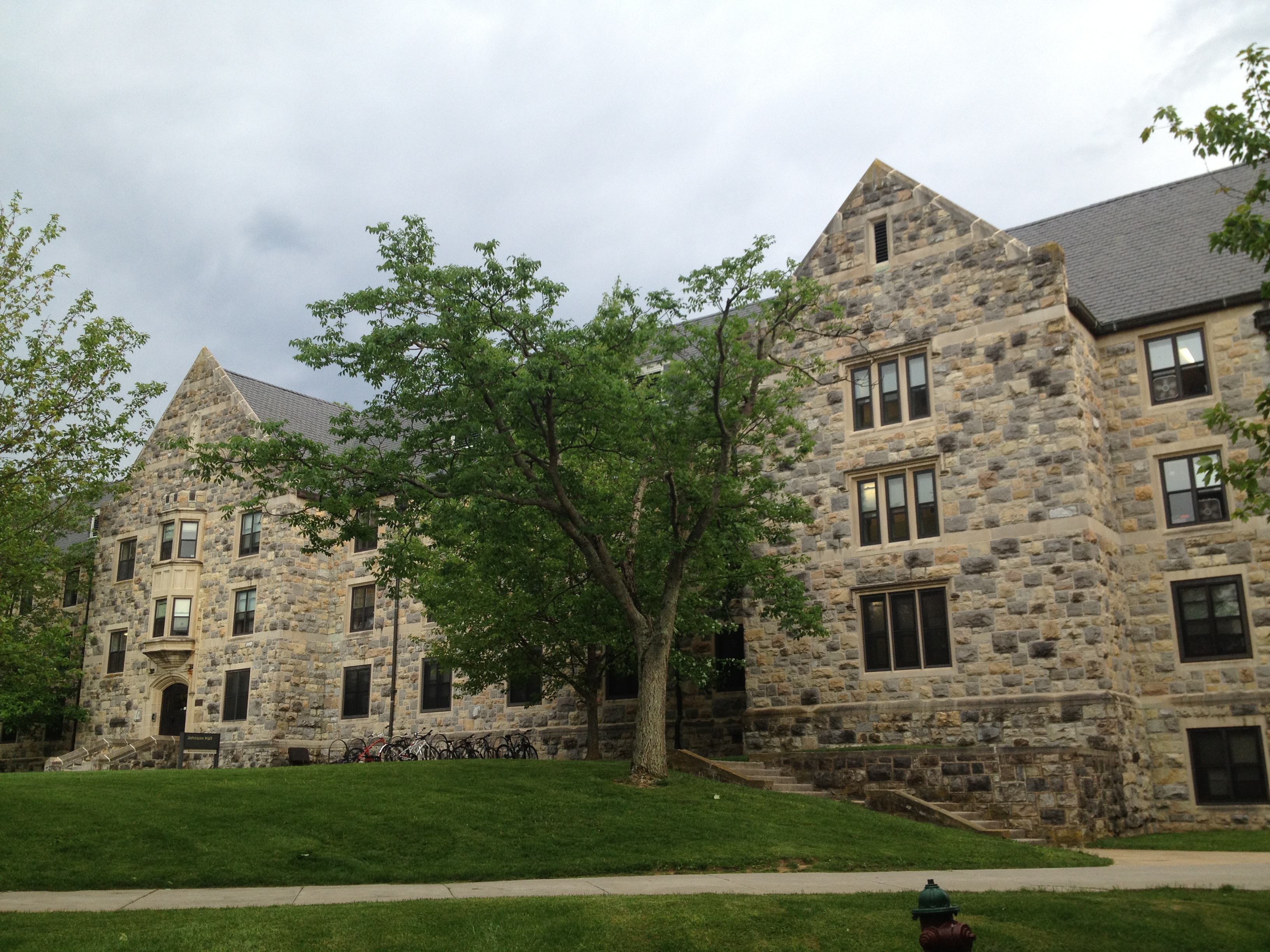Hokie Stone on:
[Wikipedia]
[Google]
[Amazon]

 Hokie Stone is a grey
Hokie Stone is a grey



File:Hokie Stone Saw.JPG,
File:Hokie Stone Breaker.JPG,
File:Virginiatech-gargoyle-on-smythe.JPG,
File:Arches at Virginia Tech.JPG,
Virginia Tech Board of Visitors: Resolution on Hokie Stone
— ''"Attachment H" to minutes of 2010 meeting''. {{Virginia Tech Virginia Tech Limestone Geology of Virginia Dolomite (rock)

dolomite Dolomite may refer to:
*Dolomite (mineral), a carbonate mineral
*Dolomite (rock), also known as dolostone, a sedimentary carbonate rock
*Dolomite, Alabama, United States, an unincorporated community
*Dolomite, California, United States, an unincor ...
—limestone
Limestone ( calcium carbonate ) is a type of carbonate sedimentary rock which is the main source of the material lime. It is composed mostly of the minerals calcite and aragonite, which are different crystal forms of . Limestone forms w ...
rock found near Blacksburg, in western Virginia
Virginia, officially the Commonwealth of Virginia, is a state in the Mid-Atlantic and Southeastern regions of the United States, between the Atlantic Coast and the Appalachian Mountains. The geography and climate of the Commonwealth are ...
. It gets its name from the traditional nickname attributed to students and alumni of Virginia Tech
Virginia Tech (formally the Virginia Polytechnic Institute and State University and informally VT, or VPI) is a public land-grant research university with its main campus in Blacksburg, Virginia. It also has educational facilities in six re ...
.
Hokie Stone is quarried by Virginia Tech for campus projects and is prominently displayed on the majority of buildings throughout the Blacksburg campus
A campus is traditionally the land on which a college or university and related institutional buildings are situated. Usually a college campus includes libraries, lecture halls, residence halls, student centers or dining halls, and park-li ...
.
Geology
Hokie Stone is limestone infused withmagnesium
Magnesium is a chemical element with the symbol Mg and atomic number 12. It is a shiny gray metal having a low density, low melting point and high chemical reactivity. Like the other alkaline earth metals (group 2 of the periodic ...
and calcium
Calcium is a chemical element with the symbol Ca and atomic number 20. As an alkaline earth metal, calcium is a reactive metal that forms a dark oxide-nitride layer when exposed to air. Its physical and chemical properties are most similar ...
under intense pressure and temperature. Hokie Stone with impurities such as siltstone and sandstone
Sandstone is a clastic sedimentary rock composed mainly of sand-sized (0.0625 to 2 mm) silicate grains. Sandstones comprise about 20–25% of all sedimentary rocks.
Most sandstone is composed of quartz or feldspar (both silicat ...
is multi-colored and found on some newer Blacksburg campus structures.
Quarry
Eighty percent of the stone is quarried from a Virginia Tech-ownedquarry
A quarry is a type of open-pit mine in which dimension stone, rock, construction aggregate, riprap, sand, gravel, or slate is excavated from the ground. The operation of quarries is regulated in some jurisdictions to reduce their envir ...
a few miles from campus near the Highland Park subdivision of Blacksburg, Virginia. Twenty-five to thirty Virginia Tech employees use black powder each day to dislodge the stone, cut it into block sizes required by campus construction projects and then finish the blocks by hand using hammers and chisels. In 2010 Virginia Tech upgraded the quarry equipment to reduce costs, including the purchase of a computer-driven saw. Hokie Stone from this quarry can only be sold to Virginia Tech.
The remaining 20% of stone, which is black, is mined once per year from an additional quarry located on a local farm near Lusters Gate. About 50 tons can be quarried each week. This university-owned quarry has been in operation since the 1950s.
History
The native woodland Indians are believed to have made tools from Hokie Stone.At Virginia Tech
Buildings
When the university was founded in 1872, buildings built in the ''Old Quad'' (now known as the ''Upper Quad'') were red brick structures, reflecting the architecture of its first building, the Preston and Olin Building, a three-story red brick edifice constructed in 1855 for thePreston and Olin Institute The Preston and Olin Institute was a Methodist academy for boys in Blacksburg, Virginia which operated from 1851 to 1872. They chose the name Preston for Colonel William Ballard Preston, of nearby Smithfield Plantation, a well-known Montgomery Cou ...
. The first Hokie Stone was cut in 1899 for the YMCA
YMCA, sometimes regionally called the Y, is a worldwide youth organization based in Geneva, Switzerland, with more than 64 million beneficiaries in 120 countries. It was founded on 6 June 1844 by George Williams in London, originally ...
Building (present day Performing Arts Building), the first to be constructed of it. V.P.I.'s first native-limestone-clad, neo-Gothic
Gothic Revival (also referred to as Victorian Gothic, neo-Gothic, or Gothick) is an architectural movement that began in the late 1740s in England. The movement gained momentum and expanded in the first half of the 19th century, as increasingly ...
style building, known as The Chapel, was later constructed on the site where Newman Library stands today. Agricultural Hall or "Old Aggie" (now known as Price Hall) was built of the stone in 1907. In 1914, the first McBryde Hall introduced the Hokie Stone-clad Collegiate Gothic style, similar to great European universities. Originally designed as red brick building, McBryde Hall was clad in locally quarried stone because of a shortage of bricks due to military construction during World War I
World War I (28 July 1914 11 November 1918), often abbreviated as WWI, was List of wars and anthropogenic disasters by death toll, one of the deadliest global conflicts in history. Belligerents included much of Europe, the Russian Empire, ...
. The first stone dormitory, Main Campbell Hall, originally known as barracks No. 8 was built in 1930.
Between the late 1940s and the 1980s, a number of concrete and brick structures absent of Hokie Stone such as Hillcrest Hall, Shultz Hall (now known as the Moss Arts Center), Cowgill Hall, Litton Reaves Hall, Wallace Hall, Derring Hall (which ironically houses the geology department), the Cassell Coliseum
Cassell Coliseum is a 10,052-seat multi-purpose arena in Blacksburg, Virginia, United States, that opened in 1962. It is home to the Virginia Tech Hokies men's and women's basketball teams, wrestling team, and volleyball team.
History
Built as a ...
and several residence halls on the ''Upper Quad'' were built. With the exception of Hillcrest Hall, which was built in the Gothic revival style in 1940 and clad in red brick, these were all modern structures and a radical departure from the architectural style of campus buildings built before World War II
World War II or the Second World War, often abbreviated as WWII or WW2, was a world war that lasted from 1939 to 1945. It involved the World War II by country, vast majority of the world's countries—including all of the great power ...
.
In 1975 the Tech Foundation bought the quarry from the local Cupp family. In 2010, the Virginia Tech Board of Visitors made it official policy that Hokie Stone be the predominant material in the facade of every new building on the Blacksburg central campus. Today each campus project uses an average of 1,500 tons of Hokie Stone, with each ton of stone covering about 35 square feet. The use of the local stone may add as much as $1 million to the cost of a new building.
Other uses
In addition to building exteriors, Hokie Stone is used in important monuments such as biographical markers outside each campus building providing a brief history of the person for whom the building is named. Thirty-two Hokie Stones were quarried by university stonemasons and engraved with the names of students and professors killed in the April 2007 school shooting. The memorial is a permanent version of one students spontaneously created using smaller stones. The Virginia Tech football team enters the playing field atLane Stadium
Lane Stadium is a college football stadium in the eastern United States, located on the campus of Virginia Polytechnic Institute and State University (Virginia Tech) in Blacksburg, Virginia. The playing surface of the stadium is named Worsham F ...
through a tunnel with an exit topped by a block of Hokie Stone which is touched by each player. In 2011, Virginia Tech offered Hokie Stone as an option for the centerpiece of class rings.
On September 26, 2013
File:2013 Events Collage V2.png, From left, clockwise: Edward Snowden becomes internationally famous for leaking classified NSA wiretapping information; Typhoon Haiyan kills over 6,000 in the Philippines and Southeast Asia; The Dhaka garment fa ...
, the football team wore helmets decorated in a Hokie Stone motif for their game at Georgia Tech
The Georgia Institute of Technology, commonly referred to as Georgia Tech or, in the state of Georgia, as Tech or The Institute, is a public research university and institute of technology in Atlanta, Georgia. Established in 1885, it is part of ...
.
Gallery
See also
*Virginia Polytechnic Institute and State University
Virginia Tech (formally the Virginia Polytechnic Institute and State University and informally VT, or VPI) is a public land-grant research university with its main campus in Blacksburg, Virginia. It also has educational facilities in six regi ...
— ''Virginia Tech''.
** Virginia Tech campus
**Virginia Tech Hokies
The Virginia Tech Hokies are the athletic teams representing the Virginia Polytechnic Institute and State University (Virginia Tech) in intercollegiate athletics. The Hokies participate in the NCAA's Division I Atlantic Coast Conference in 22 v ...
*Collegiate Gothic in North America
Collegiate Gothic is an architectural style subgenre of Gothic Revival architecture, popular in the late-19th and early-20th centuries for college and high school buildings in the United States and Canada, and to a certain extent Europ ...
* Limestone buildings
*List of types of limestone
This is a list of types of limestone arranged according to location. It includes both formal stratigraphic unit names and less formal designations.
Africa Egypt
* Tura limestone, used for the Great Pyramid casing stones
* Mokattam limestone; ...
References
External links
Virginia Tech Board of Visitors: Resolution on Hokie Stone
— ''"Attachment H" to minutes of 2010 meeting''. {{Virginia Tech Virginia Tech Limestone Geology of Virginia Dolomite (rock)